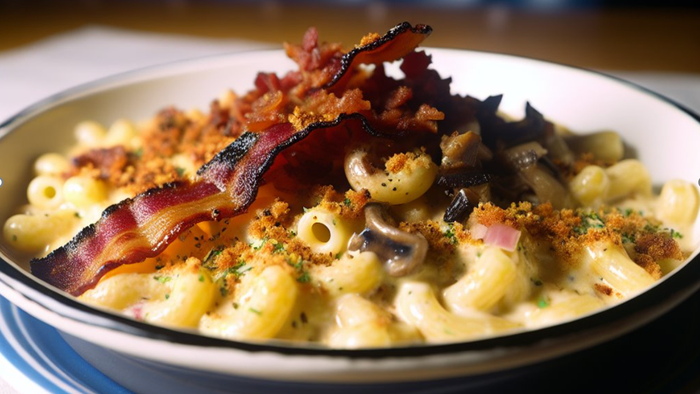The Future of Food at EventsThe Future of Food at Events
May 21, 2020
.jpg?width=1280&auto=webp&quality=95&format=jpg&disable=upscale)
Buffets, butler passed bites and food stations have always been a popular trend at weddings and other events. Not only do they require less servers when compared to a plated meal, they also allow guests to personalize their plates based on their own tastes. However, the world of buffets and food stations will be a thing of the past as we are forced to think differently about food and the way we serve it in the wake of COVID-19.
“Food and beverage is going to continuously change, from mixology and how they’re serving cocktails all the way to the food station, the sushi bar—it really goes all the way down the line,” said Mary Wright Shah, of Dallas-based Diamond Affairs Weddings and Special Events, during the recent WIPA webinar State of the Wedding Industry – Part 2. “The way we entertain is completely going to change.”
No more self-serve
When it comes to how food will be served at events going forward, there are a few different ideas that can be considered, specifically whether to get creative with food stations and buffets, or whether plated meals is the best option.
Join Catersource on June 24 for the Rebuild & Rise Webinar "Can Buffets Survive COVID?" Learn more and register by clicking here.
Fortunately, there hasn’t been any evidence to date that the coronavirus can be transferred through food, so the real concern comes in the form of shared utensils and serving ware. One way to address the concerns over shared utensils is to look at having attendants or servers stationed at a buffet or a food station serving each individual guest.
“The idea is that when you walk up to the cheese table, you can’t grab it,” said Renee Dalo, of Los Angeles’ Moxie Bright Events, during the WIPA webinar. “There is someone there to compose the perfect bite and give it to you.
“It’s a totally different way to serve, but in a way that detail and attention becomes a little bit more elevated.”

In the future, buffets and food stations will most likely require gloved attendants to serve guests. Photo courtesy Cocktails & Canapes Catering and Events.
The same idea can also be applied to buffets, a guest will indicate to an attendant what item they would like, and then it is plated and served to them.
“It almost elevates the level of service and brings it back to the 40s and 50s and 60s when they first started introducing buffets and food stations and everything was served to you,” Wright Shah said. “Maybe this is our way of ramping up the luxury.”
The shift in buffets and food stations will also have an impact on menus as well.
“You’re going to have to trim back drastically your menu offerings,” said Roy Porter, of Engage Works in Los Angeles, during the Instawork webinar Preparing Your Full-Service Experience for the New Normal. “You’re going to have to take an item and figure 10 different ways to turn it into an hors d'oeuvre.”
Six feet of separation
In addition to no more self-serve food, there is also going to be a need for safe social distancing between guests and the servers handing out the food. Several companies have already started thinking about ways to protect guests and servers alike through innovative equipment. For example, Thomas Caterers of Distinction have designed a butler tray that includes a sneeze guard, and American Metalcraft has designed several new products including acrylic protective barriers, including options that mount on a counter or hang from the ceiling, that can separate guests from the food.
“There’s a lot of ways to distance people away from the food if done the right way,” said Vagn Nielsen, of Proof of Pudding out of Atlanta, during a recent ICA Executive Chef Roundtable webinar.

The hinged panel protective barrier from American Metalcraft is made of 1/8″ acrylic. Photo courtesy American Metalcraft
In addition to protective barriers and sneeze guards, larger farm-style tables could also become more popular because of the ability to social distance. Gloves will also become status quo for servers and other event staff.
“I feel like the white glove service is going to make a comeback on a daily basis,” Wright Shah said.
Besides the necessary sanitary reasons, gloves will also ease guests’ fears just by seeing them.
“Do I like having people wear gloves on the floor, no I don’t, I don’t think it looks good, but people are going to like to see that,” said Reed Haggerty, of Dsquared Hospitality in Seattle, during the recent Instawork webinar.
“You’re giving guests the peace of mind so they can focus on the experience,” Porter added.
Regardless of how the future of food shakes out in the coming months, the industry is going to have to come together to embrace the new world of events.
“Our goal as planners is to make sure that our staff, and our families and our clients feel as safe as possible when they come to these celebrations,” Shah Wright said.
“And they’re going to need all of us to help normalize it, Dalo added. “No matter what it is, we’ve got to get on board and fast.”







